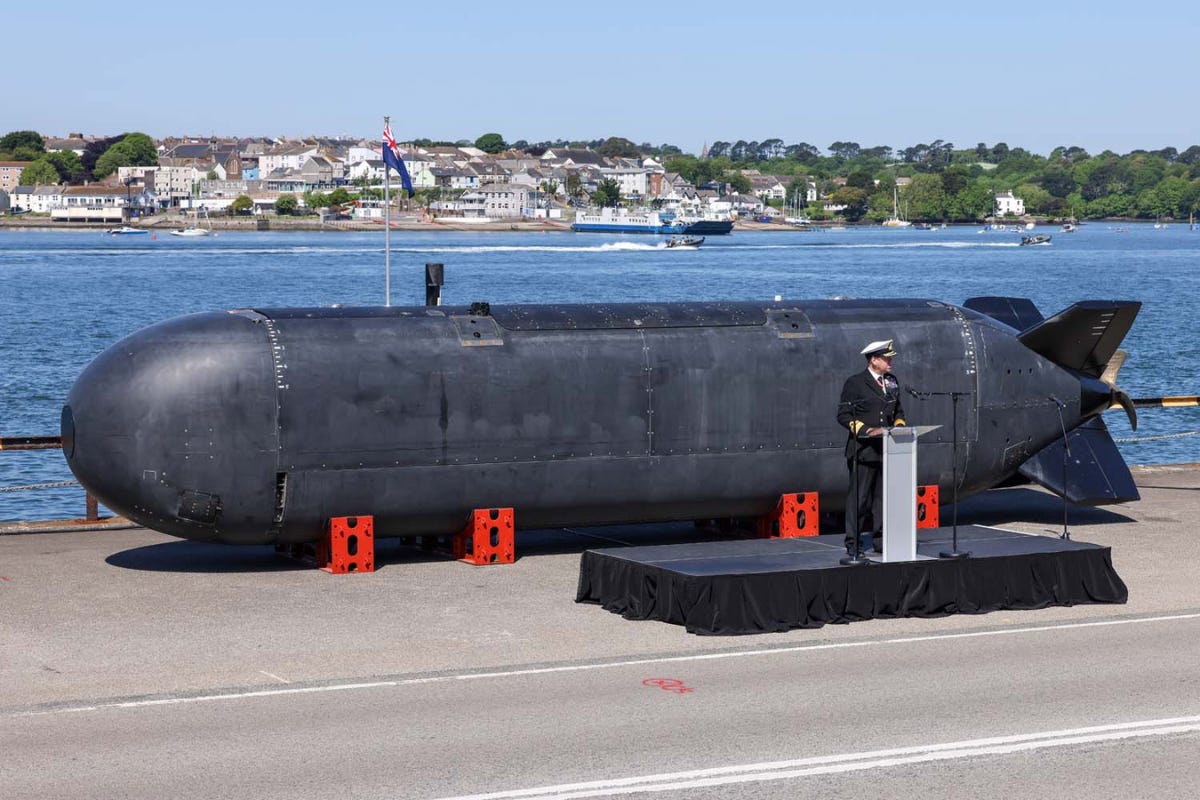XV Excalibur
The Royal Navy's Giant Crewless Submarine Has a Mission
By Richard Gough
There’s something quietly revolutionary happening beneath the waves of the North Atlantic. You probably haven’t heard of Project CETUS, and that’s no accident. It’s one of the Royal Navy’s most ambitious – and least discussed – experiments in military autonomy. But it's time we talked about it.
Earlier this year, a 12-metre uncrewed submarine – a sleek, black, bus-sized behemoth – was craned into the water off Plymouth. This machine, now formally named XV Excalibur, is not science fiction. It’s the largest underwater drone operated by any European navy. And while it won’t be sinking enemy ships anytime soon, it will shape how we patrol and protect our undersea world in the years to come.
The Royal Navy's first unmanned submarine, CETUS, is set to undergo sea trials in 2027
Why It Matters
Our oceans are no longer peaceful blue voids. Beneath the surface lies a complex web of communication cables, pipelines, and vital infrastructure. It’s also where a new generation of threats is emerging – from Russian submarine activity to the grey-zone sabotage of undersea assets. The Royal Navy’s answer? A stealthy, autonomous vehicle like CETUS that can patrol, surveil, and persist underwater for days at a time – no crew required.
What makes Excalibur unique is not just its size, but its strategic role. It’s designed to go deep (deeper than any RN sub), stay out for days, and carry modular payloads – everything from towed sonars to underwater robots. In theory, it could map a contested coastline, shadow an enemy sub, or monitor a vital cable route – all while remaining virtually undetectable.
Built by MSubs in Plymouth and funded through a £15.4 million Ministry of Defence contract, CETUS isn’t just a one-off experiment. It’s a technology demonstrator for what the Royal Navy calls the future Type 93 XLUUV – a new class of uncrewed submarines expected to enter service in the 2030s. Right now, it’s a prototype. But give it a few years, and it could be leading patrols in the Greenland-Iceland-UK (GIUK) gap.
CETUS is part of a broader transformation within the Royal Navy’s underwater operations, grouped under Project CABOT. Here’s how it’s structured:
Atlantic Net – a rapid-deployment phase using commercially operated underwater drones to form a kind of outsourced early warning network. This is already under way.
Bastion Atlantic – a second phase focused on fully government-owned and operated uncrewed systems, including CETUS and its successors. This phase is where long-endurance patrols and integration into the Navy’s fleet really take shape.
Holding the Seabed
Why does this matter for the UK public? Because the sea floor is where our future lies. Subsea infrastructure – from internet cables to energy lines – is a lifeline for our economy and security. CETUS gives the UK a tool to guard those arteries. As Defence Secretary Ben Wallace put it, it's about "ensuring we have the right equipment to protect the security of the UK and our Allies."
The threat is real. From the suspected sabotage of the Nord Stream gas pipelines in 2022 to reports of Russian vessels mapping UK seabed infrastructure, the game has changed. What CETUS offers is a quiet, persistent, adaptable presence – the ability to watch the watchers.
The Limits and the Leap
CETUS doesn’t carry weapons – at least not yet. Its role is surveillance, seabed reconnaissance, and sensor deployment. But its 5-ton payload bay means it could carry just about anything, from small ROVs to sonar arrays. It’s a bit like a Swiss Army knife of the deep.
It’s also limited in how it’s deployed. Type 26 frigates can’t launch it directly – it’s too heavy – but larger vessels like the new RFA Proteus can. Alternatively, it can be launched from ports or offshore facilities using standard containerized systems. That portability matters. It means CETUS can show up quickly, almost anywhere, and quietly start work.
The Royal Navy has also made it clear that CETUS is just the beginning. The goal is a networked underwater force – a hybrid of crewed subs and autonomous drones, working together in contested zones.
A Shift in Thinking
As someone who came of age as a naval watchkeeper in the Cold War, I find this shift to uncrewed autonomy both thrilling and sobering. Machines like Excalibur won’t replace submariners – but they will change the game. They offer endurance, deniability, and reach we never had. And crucially, they allow us to cover more ocean with fewer people at risk.
The real challenge isn’t technical – it’s cultural. Integrating these systems into command structures, building trust in autonomy, and rewriting the doctrine around them will take time. But it’s happening. CETUS is already doing in-the-water testing. Within the next year, we’ll see it deploy payloads, track targets, and likely participate in exercises with NATO allies.
A Glimpse of the Future
CETUS is the Royal Navy’s first real move into uncrewed submarine-scale platforms. It’s cautious, well-scoped, and technically grounded. But it’s also imaginative. And it’s needed.
The undersea domain is becoming the new front line – not just for navies, but for nations. As global power competition shifts below the surface, we’ll need tools that can keep pace. CETUS is that tool: persistent, smart, and sovereign.
As it completes its sea trials and edges toward operational concepts, I’ll be keeping a close eye on it – and you should too.
This isn’t just the future of naval warfare. It’s the future of how we see, sense, and secure our underwater world.
Follow me on Future Navy AI for more stories about the future of defence and technology.


